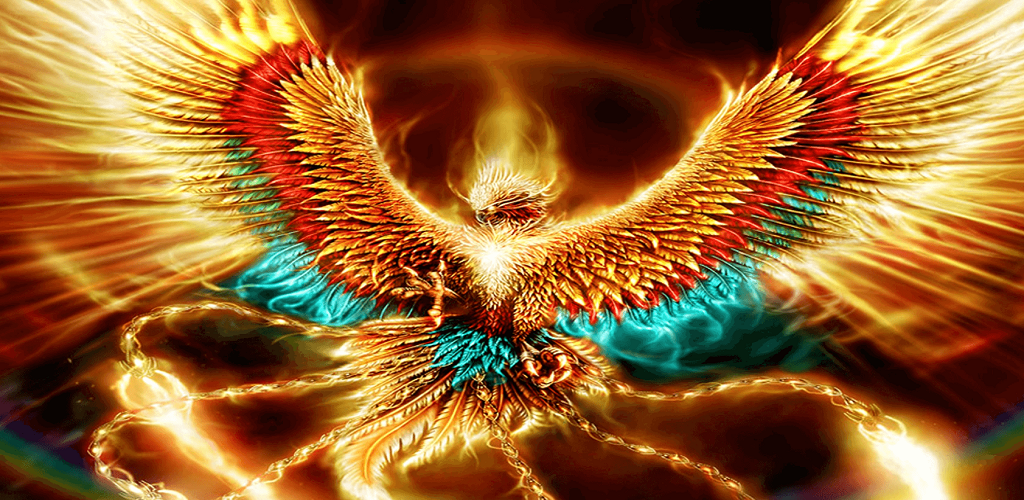
Python

The Python of Delphi
Usually represented as a serpent, he presided over the Delphic oracle.
Unfortunately he became enemies with the Olympian deity Apollos who ended up killing him and taking the oracle for himself.
There are various versions of Python's birth and death at the hands of Apollo. In the Homeric Hymn to Apollo, now thought to have been composed in 522 BCE during Classical times, a small detail is provided regarding Apollo's combat with the serpent, in some sections identified as the deadly Drakaina (see below), or her parent.
The version related by Hyginus holds that when Zeus lay with the goddess Leto, and she was to deliver Artemis and Apollo, Hera was jealous and sent Python to pursue Leto throughout the lands, so that she could not deliver wherever the sun shone. Thus when Apollo was grown he wanted to avenge his mother's plight and pursued Python, making his way straight for Mount Parnassus where the serpent dwelled, and chased it to the oracle of Gaia at Delphi; there he dared to penetrate the sacred precinct and kill it with his arrows beside the rock cleft where the priestess sat on her tripod.
Robert Graves, who habitually read into primitive myths a retelling of archaic political and social turmoil, saw in this the capturing by Hellenes of a pre-Hellenic shrine. "To placate local opinion at Delphi", he wrote in The Greek Myths, "regular funeral games were instituted in honour of the dead hero Python, and her priestess was retained in office".
The politics are conjectural, but the myth reports that Zeus ordered Apollo to purify himself for the sacrilege and instituted the Pythian Games, over which Apollo was to preside, as penance for his act.
Erwin Rohde wrote that the Python was an earth spirit, who was conquered by Apollo, and buried under the Omphalos, and that it is a case of one god setting up his temple on the grave of another.
The priestess of the oracle at Delphi became known as the Pythia, after the place-name Pytho, which Greeks explained as named after the rotting (πύθειν) of the slain serpent's corpse in the strength of Hyperion (day) or Helios (the sun).
Karl Kerenyi points out that the older tales mentioned two dragons, who were perhaps intentionally conflated; the other was a female dragon (drakaina) named Delphyne in the Homeric Hymn to Apollo, with whom dwelt a male serpent named Typhon: "The narrators seem to have confused the dragon of Delphi, Python, with Typhon or Typhoeus, the adversary of Zeus".
The enemy dragoness "... actually became an Apollonian serpent, and Pythia, the priestess who gave oracles at Delphi, was named after him. Many pictures show the serpent Python living in amity with Apollo and guarding the Omphalos, the sacred navel-stone and mid-point of the earth, which stood in Apollo's temple" (Kerenyi 1951:136).
This myth has been described as an allegory for the dispersal of the fogs and clouds of vapor which arise from ponds and marshes (Python) by the rays of the sun (the arrows of Apollo).
Drakaina
Examples of the Drakaina included Campe, Delphyne, Echidna and Sybaris.
Python, slain by Apollo, and the earliest representations of Delphyne are shown as simply gigantic serpents, similar to other Greek dragons. However, although the word "drakaina" is literally the feminine form of drakon (Ancient Greek for dragon or serpent), most drakainas had some features of a human woman. Lamia, Campe, Echidna, and many representations of Ceto, Scylla and Delphyne had the head and torso of a woman.
The drakaina was a monster generally slain only by gods or demigods. Zeus slew Delphyne and Campe, Apollo slew Python, and Argus Panoptes slew Echidna.
Echidna was the mother of a huge brood of monsters, including other dragon-like creatures. According to Hesiod, Echidna gave birth to Cerberus, Orthrus, the Chimera, the Nemean lion, the Sphinx and the Hydra (Other ancient authors, such as Hyginus, attribute even more monsters as children of Echidna such as the Caucasian eagle, the Crommyonian Sow, the Colchian dragon, the Harpies, Scylla, and Charybdis.
Our Mobile Application
Check out Our Mobile Application "Ancient Greece Reloaded"


